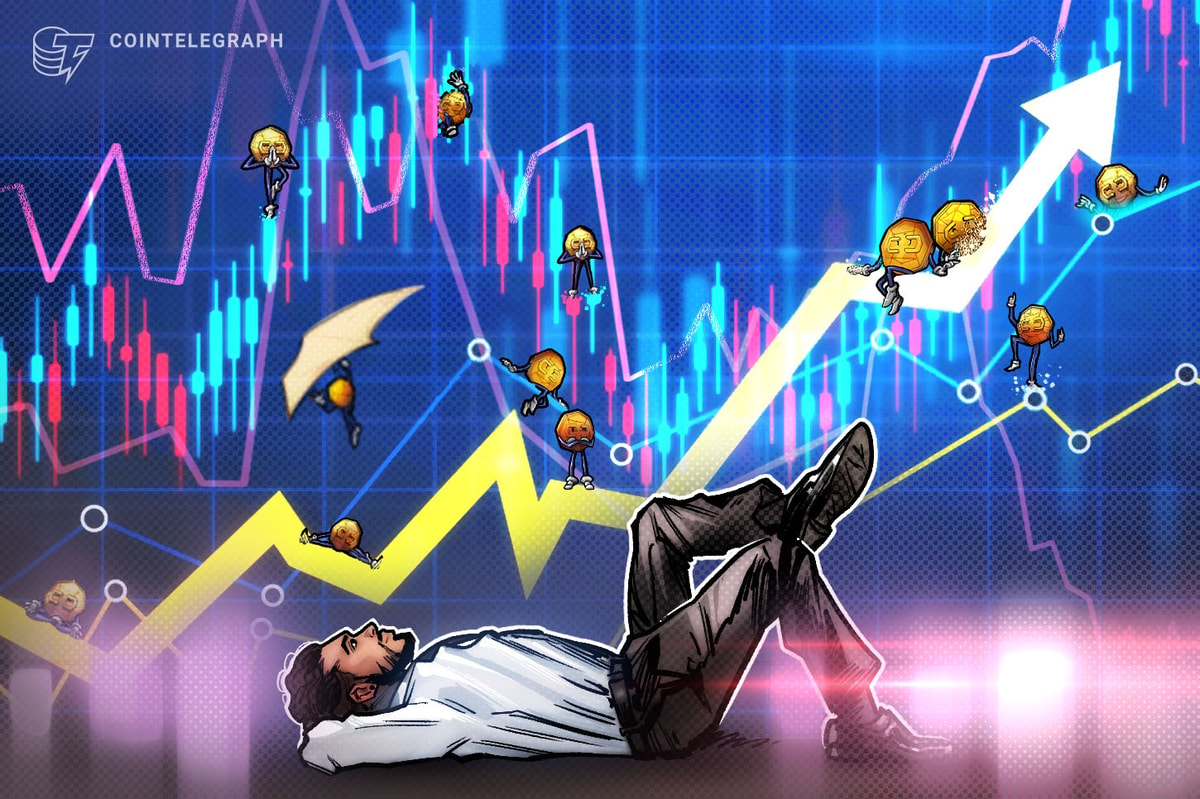Trader Joe has risen into the top five decentralized exchanges (DEXs) by trading volume following the launch of its v2 platform on Arbitrum on Feb. 1.
The project launched a liquidity incentive program to boost deposits for Arbitrum’s ARB, Ether (ETH) and USD Coin (USDC) trading, which shared rewards of 300,000 JOE worth around $171,000. The incentive program ends on April 6.
The project’s social media account reported that Trader Joe accounted for 15.7% of the total ARB trading volume in the first week.
We do a little trading at Trader Joe’s.
Liquidity Book powered 15.7% of all $ARB trading on-chain in the first 7 days pic.twitter.com/qlcYwvXFrp
— Trader Joe | (@traderjoe_xyz) April 2, 2023
While JOE incentives played a hand in increasing the liquidity for ARB, innovation from the team in developing the capital efficiency of the DEX is the primary reason behind its growth.
Trader Joe climbs up the ranks in DEX space
Trader Joe launched a Liquidity Book (LB) model with its v2 upgrade in Q4 2022, which competes against Uniswap v3’s liquidity model.
Trader Joe’s model allows liquidity providers (LPs) to add liquidity in designated “price bins” to improve capital efficiency. A Delphi report noted that its design offers “zero-slippage” and “provides much more flexibility due to its fungible nature and provides better flexibility and experience for LPs.”
Power decentralized finance (DeFi) user Yash praised the DEX for its innovation, which is transpiring into organic growth.
It took 3 months, but here it is. @traderjoe_xyz is at 2nd rank on Arbitrum by volume(7 days).
Ponzinomics can help protocol gain usage & token price go up in short term. But for long-term sustainability, you need innovation at the protocol layer. https://t.co/WVY8joULYn pic.twitter.com/AAWKz2dkOL
— yash (@yashcrypto21) April 4, 2023
The aim of Uniswap v3 and LB models is to concentrate liquidity around active trading ranges to bring maximum fees for liquidity providers and reduce slippage for traders.
Currently, Trader Joe appears well-positioned to capture market share across newer ecosystems like Ethereum layer 2s and sidechains. However, besides Uniswap, the project faces competition from a crucial event imposed by source code licensing policies.
Uniswap v3’s code license expired on April 4, allowing teams to fork its design in their DEXs. PancakeSwap, the leading DEX on BNB Smart Chain, was one of the first to fork Uniswap’s model to launch trading desks on BNB Chain, Aptos and Ethereum-based blockchains.
Related: Arbitrum’s ARB token signifies the start of airdrop season — Here are 5 to look out for
JOE price analysis
The Delphi report estimated a price-to-earnings ratio (P/E) to reach between 15.5 and 7.5 (adjusted for the last trading price of $0.57) for sJOE tokenholders after the launch of V2.1, which is expected by the second week of April.
A P/E ratio lower than 15.2 would place Trader Joe in the top 15 protocols concerning real earnings for tokenholders, per Token Terminal data. The P/S ratio, calculated using dividing the fully diluted market capitalization of a token by its annualized revenue for tokenholders, is higher than 15 for popular DeFi protocols like dYdX, SushiSwap and Convex Finance.
The price of JOE broke out of its deep slumber from last year with the progress made with LB design and migration to additional platforms beyond Avalanche.

The token currently eyes upside toward the 2022 breakdown levels around $1.01 and January 2022 high of $1.52. To the downside, support lies between the $0.13 to $0.20 level.
The views, thoughts and opinions expressed here are the authors’ alone and do not necessarily reflect or represent the views and opinions of Cointelegraph.
This article does not contain investment advice or recommendations. Every investment and trading move involves risk, and readers should conduct their own research when making a decision.



